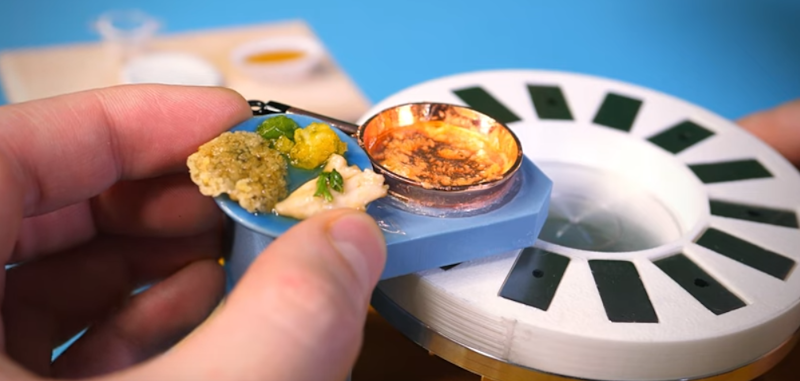Have you ever wondered how induction cooking works? A rotating magnetic field — electrically or mechanically — induces eddy currents in aluminum and that generates heat. When [3D Sage] learned this, he decided to try to 3D print some mechanical rigs to spin magnets so he could try cooking with them.
We doubt at all that this is practical, but we have to admit it is fun and there are some pretty impressive 3D prints in the video, too. The cook surface, by the way, is tiny, so you won’t be prepping a holiday meal on it. But there’s something super charming about the tiny breakfast on a plate produced by a printed magnetic “stove.” We would be interested to know how much power this setup consumed and how much heat was produced compared to, say, just using a big resistor to heat things up.
We’ve heard that induction heating is efficient, but this setup is a bit unconventional. If cooking things isn’t your bag, you can use induction for soldering, too.

















Looks like a recycled video idea.
Many Moving Magnets Melting Metal
https://www.youtube.com/watch?v=l8PxXZoHTVU
Cody is great but he did not invent induction heating
Yes, Cody did not invent induction heating. But Cody accomplished something most of us never will. He used spinning magnets to explain a technology that would be hard for most of us to understand if explained any other way.
This is the best hack I’ve read in a long time!
Aluminium pots definitely do not work on our induction cooker. We love the cooker, but had also sped a fair bit in new pots that magnets would cling to, especially in the bottom.
It is great to see bubbles appear almost immediately a pot of water is being heated, and great plume of heat heading out and over the side of the pot and up the exhaust. Highly recommended.
A real life cooker with aluminium pots and rotating magnets is highly exciting, but probably not safe or practical. How long would magnets in such a setup last?
Cast iron is the best, interestingly titanium pots work on induction (but unless you have some for camping, odds are steel and iron will be better bets).
I have one thin stainless steel bowl (non magnetic) which works on my cheap induction unit but not my Samsung hob. It’s always fun to play around with aluminum foil and induction burner. It can sometimes be melted or fool the unit to stay on and heat a “non induction” pan.
Not sure I would cook with a flammable metal. Yeah maybe the temperatures don’t hit ignition temp but in the off chance something happens to ignite it then it’s basically impossible to put out until it’s burned
I use an aluminum frying pan with a wooden spatula. I don’t have a class d fire extinguisher. Neither have set on fire. Induction usually won’t let pans get too hot, unlike gas.
reminded me of Ann Reardon’s tiny food https://www.youtube.com/watch?v=tD48kCauw_c?list=PLPT0YU_0VLHzCHbvjWgVJcMCp9_XTCQdL